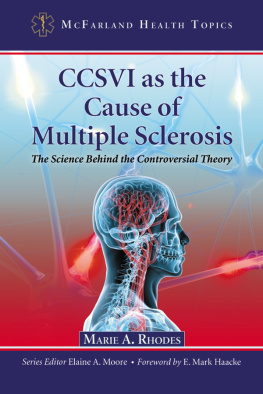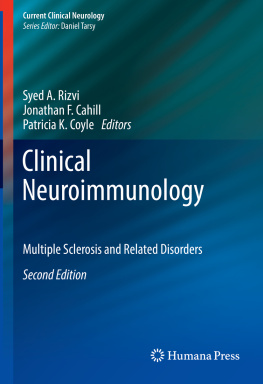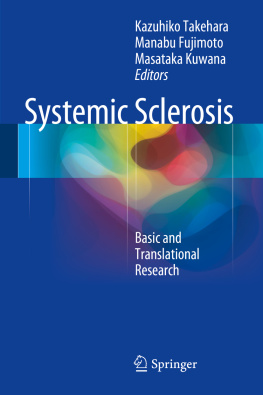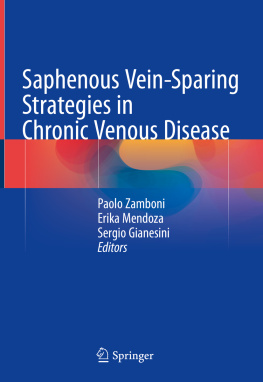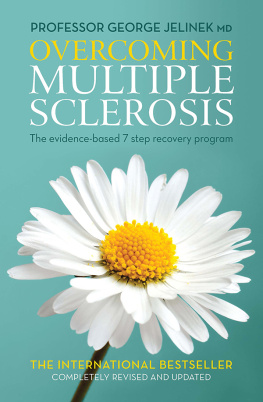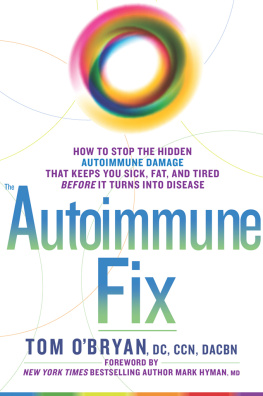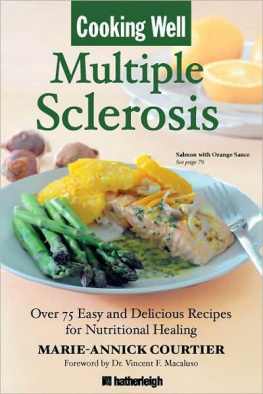
Table of Contents
McFarland Health Topics Series
Living with Multiple Chemical Sensitivity: Narratives of Coping.
Gail McCormick. 2001
Graves Disease: A Practical Guide.
Elaine A. Moore with Lisa Moore. 2001
Autoimmune Diseases and Their Environmental Triggers.
Elaine A. Moore. 2002
Hepatitis: Causes, Treatments and Resources.
Elaine A. Moore. 2006
Arthritis: A Patients Guide.
Sharon E. Hohler. 2008
The Promise of Low Dose Naltrexone Therapy: Potential Benefits in Cancer, Autoimmune, Neurological and Infectious Disorders.
Elaine A. Moore and Samantha Wilkinson. 2009
Living with HIV: A Patients Guide.
Mark Cichocki, RN. 2009
Understanding Multiple Chemical Sensitivity:
Causes, Effects, Personal Experiences and Resources .
Els Valkenburg. 2010
Type 2 Diabetes: Social and Scientific Origins, Medical Complications and Implications for Patients and Others.
Andrew Kagan, M.D. 2010
The Amphetamine Debate: The Use of Adderall, Ritalin and Related Drugs for Behavior Modification, Neuroenhancement and Anti-Aging Purposes.
Elaine A. Moore. 2011
CCSVI as the Cause of Multiple Sclerosis: The Science Behind the Controversial Theory. Marie A. Rhodes. 2011
Coping with Post-Traumatic Stress Disorder: A Guide for Families, 2d ed. Cheryl A. Roberts. 2011
Living with Insomnia: A Guide to Causes, Effects and Management, with Personal Accounts.
Phyllis L. Brodsky and Allen Brodsky. 2011
Library of Congress Cataloguing-in-Publication Data
Rhodes, Marie A., 1960
CCSVI as the cause of multiple sclerosis : the science
behind the controversial theory / Marie A. Rhodes ;
foreword by E. Mark Haacke.
p. cm. (McFarland Health Topics)
[Elaine A. Moore, series editor]
Includes bibliographical references and index.
ISBN 978-0-7864-6038-0
1. Multiple Sclerosisetiology. 2. Cerebral Veins
physiopathology. 3. Multiple Sclerosistherapy.
4. Spinal Cordblood supply. 5. Venous Insufficency
complications. I. Title.
RC377.R47 2011
616.8'34dc22 2011008713
British Library cataloguing data are available
2011 Marie A. Rhodes. All rights reserved
No part of this book may be reproduced or transmitted in any form or by any means, electronic or mechanical, including photocopying or recording, or by any information storage and retrieval system, without permission in writing from the publisher.
Front cover image 2011 Shutterstock
McFarland & Company, Inc., Publishers
Box 611, Jefferson, North Carolina 28640
www.mcfarlandpub.com
Acknowledgments
The first and most important person I would like to thank is Paolo Zamboni, MD, of Ferrara, Italy, whose incredible discovery makes this book possible. This gentle man, who suffers from a neurodegenerative disease of his own, truly understands what its like to live with a physical challenge. He has devoted his time to educating other medical professionals about his findings while he simultaneously participates in additional research to find further answers about how CCSVI contributes to multiple sclerosis. Dr. Zamboni very kindly reviewed the manuscript of this book before publication and was available to me for questions as I wrote. My gratitude to him is heartfelt.
Next I would like to thank E. Mark Haacke, PhD, the world-renowned physicist and pioneer in MR imaging. This award-winning researcher became interested in the CCSVI model when he learned of Dr. Zambonis work because his extensive research involving imaging iron in the brains of MS patients, begun in 1997, is potentially supportive of the new model. Dr. Haackes dedication to evaluating CCSVI has included establishing an innovative worldwide registry to record data gathered in a very specific imaging protocol which evaluates blood flow before and after angioplasty treatment for CCSVI. Dr. Haacke made himself available to me and not only reviewed an early draft along and offered recommendations for making the book better, but also kindly performed a complete review of the final manuscript. I am very grateful for the generous gift of Dr. Haackes time and thoughtful consideration of my work.
The next person I would like to thank is Marian Simka, MD, a vascular specialist and researcher in Poland. He was one of the first physicians to undertake treatment for CCSVI and his research in this field has helped answer important questions about this new paradigm. When I contacted him regarding some of his research he thoughtfully offered to review my work. His kind encouragement and assurance that a book that reviews the research related to CCSVI would be a valuable contribution gave me the heart to press on. I am very appreciative of Dr. Simkas mentorship.
I would also like to thank Michael Dake, MD, who not only generously reviewed portions of this book but who also performed my own angioplasty for CCSVI in his observational study of the new model. I do not believe I could have undertaken this monumental task before that procedure; my improved energy has changed my life for the better. I will be forever grateful to this compassionate physician, and he holds a special place in my heart for his willingness to treat me.
Several other physicians have reviewed portions of the book. I would like to thank Jack Burks, MD, for his review and kind words about the chapter on immunology. I would also like to thank David Hubbard, MD, for his generous review and critique of chapters one and six and Gianfranco Campalani, MD, for encouragement after reviewing an early draft.
These medical professionals provided me with critical support and clarification of their research to make sure that my words accurately reflected their intention.
I have also had kind and generous support from professionals in the publishing industry. I would like to thank my editor Elaine A. Moore who generously took me under her wing and supported me not only by editing my work, but also by sending me books and magazines from her personal library to help me write more clearly. She also referred me to Marv Miller, a medical illustrator she had worked with on previous projects. His generous offer to read the book then design illustrations for those places where readers could use visual aid was invaluable to the final version of this book. Im very grateful to both of these people.
In addition to this professional support, many MS patients kindly reviewed the manuscript. The first MS patient that Id like to thank is my friend Samantha Wilkinson, who wrote a book with Elaine Moore for McFarland titled The Promise of Low Dose Naltrexone Therapy. When she was asked to write another book about MS, she suggested McFarland might like to contact me. The result was a contract to write this book. Sam generously reviewed multiple drafts and was always ready with a kind word. Many times when I wondered what I was doing, Sam reassured me that patients would love this book, and she suggested the plain language summaries at the end of each chapter as a way to help make the dense science more understandable. I will always be grateful to Sam; without her help this book could never have happened.
The other patients I would like to thank are all of the people who contributed their stories to chapter 7. Jeff, Sharon, Carrie, Mark, Melissa, Lew, Gianfranco, Devin and Danielle generously allowed readers to take a peek into their personal lives by sharing their stories in this book. In addition to offering their stories, Sharon, Mark, Lew and Danielle read the complete manuscript and gave me feedback about how patients might read this book. The ideas that they shared with me helped make the book more readable to nonmedical people.
Next page
